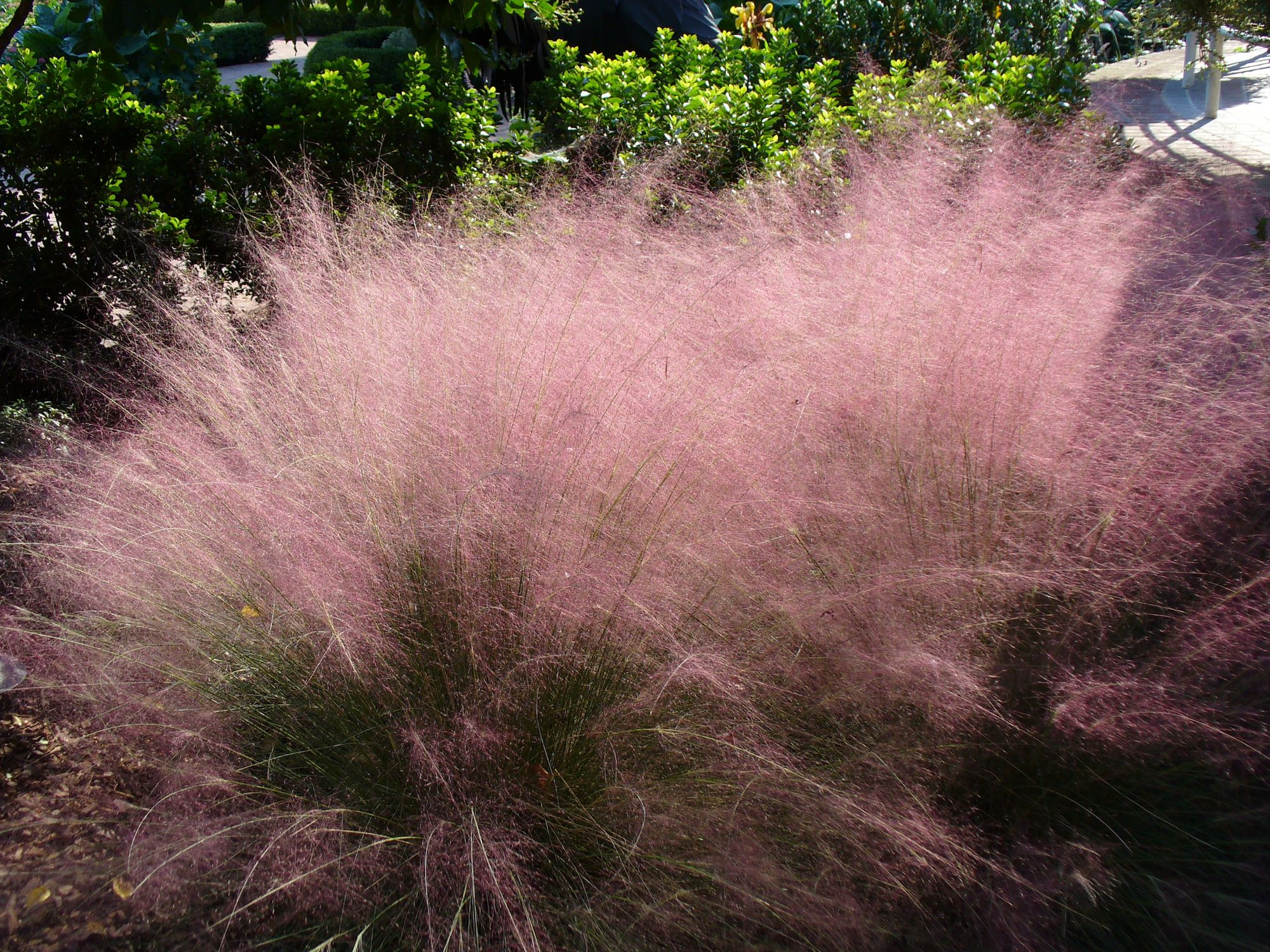
A Plant With an Unusual Appearance
We’re back in the Florida Backyard, which means it’s time to explore another ornamental plant. This is muhly grass, a member of the genus Muhlenbergia, which includes over 150 species of grasses, most native to the southwestern United States and Mexico, but with some hailing from farther south or east as well as a few from Asia. If that name looks familiar to some of my readers, it should. This group of plants was named in honor of Gotthilf Heinrich Ernst Muhlenberg, an amateur botanist and a son of Henry Muhlenberg, the patriarch of an influential German-American family that included prominent clergymen, politicians, and military leaders. Muhlenberg College in Allentown, Pennsylvania is also named after the family.
At first glance, this particular species, Muhlenbergia capillaris (found in Florida but also parts further west and north), does not seem particularly special or attractive. Just a regular bush or hedge. Yet, it is a common roadside plant, both naturally and as an ornamental (the latter being more common in developed areas of Florida). In fact, it was named the plant of the year for 2012 by the Garden Club of America. Remember that grasses are a type of flowering plant, but the flowers on many grasses, especially those most often used in lawns are not highly prominent. Muhly grass, however, is different. You can see hints of it in the picture above, but in full bloom it transforms.

The flowers grow from a separate stem that rises above the leaves, creating a feathery, cloud-like appearance to the plant. It looks almost ethereal or otherworldly in this double-layered form. This species also has a tendency to clump, with multiple plant shrubs growing in close proximity to each other. However, each plant in a clump is separate and distinct from one another. It does not expand outward with its stems either above-ground like irises and some orchids, or underground like tulips and lilies. This clumping gives muhly grass the appearance of a large bush or hedge.
Part of the reason why it is such a popular plant, besides its obvious beauty, is its ease of cultivation. It is a perennial, drought and shade tolerant, as well as disease resistant and requiring a low amount of maintenance. Its clumping nature makes it well suited as cover and shelter for a variety of smaller birds and mammals. It is also a warm season grass, meaning that much of its growth occurs during the summer and it blooms in the autumn. This blooming period also happens to coincide with the general time that human snowbirds begin arriving here in Florida.
With a lot of these Backyard Florida stories, I want to continue to remind you all about looking for natural beauty in unexpected places. Don’t just take a single glance at anything. Often, it isn’t until the second or third look that we notice something extraordinary. Sometimes it’s even later than that. Keep your eyes and ears open to the world around you. There’s no telling what you might find.